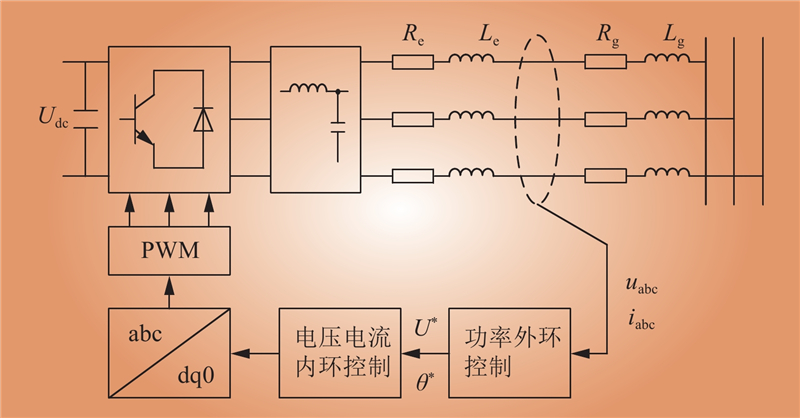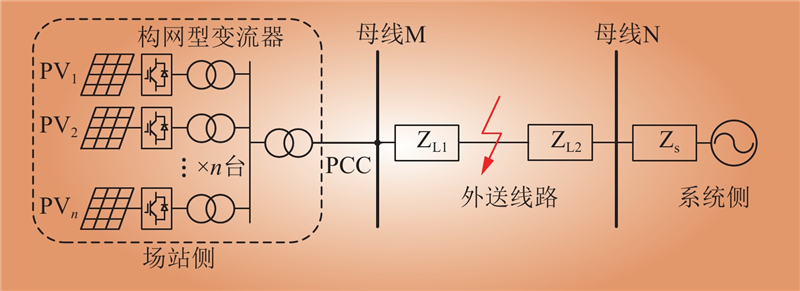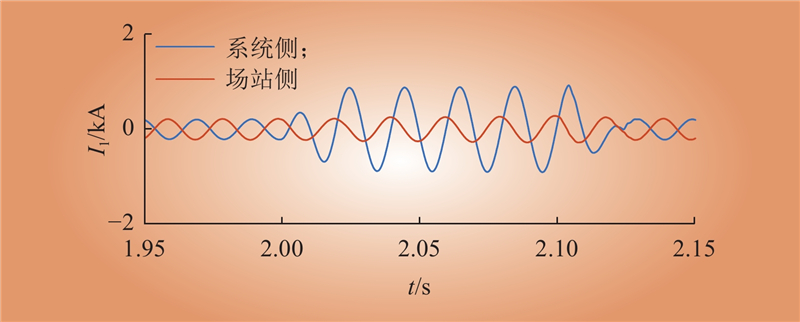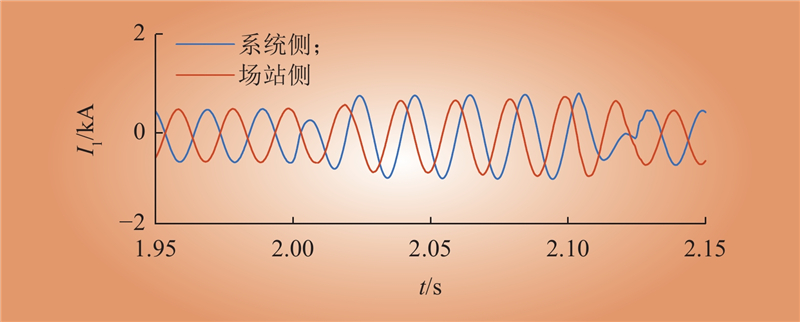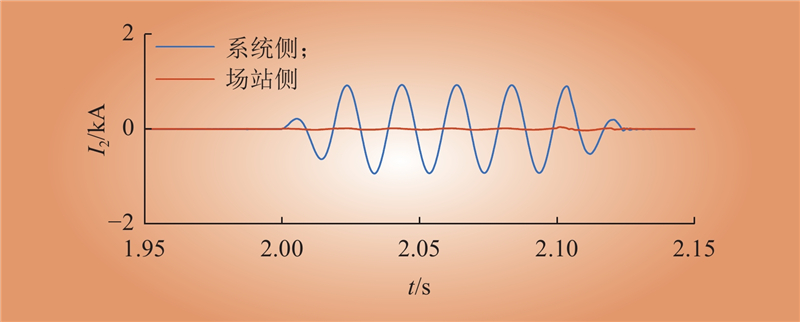| 1 |
曹宏宇, 梁言贺, 刘惠颖, 等. 考虑风-光-储不确定性的新型电力系统概率潮流计算[J]. 电测与仪表, 2024, 61 (6): 87- 93.
|
|
CAO Hongyu, LIANG Yanhe, LIU Huiying, et al. Probabilistic power flow calculation of novel power system considering uncertainty of wind-light-storage[J]. Electrical Measurement & Instrumentation, 2024, 61 (6): 87- 93.
|
| 2 |
王杰, 郑飞, 张鹏城, 等. 基于数据驱动的高比例新能源配电网规划模型[J]. 中国电力, 2025, 58 (3): 175- 182.
DOI
|
|
WANG Jie, ZHENG Fei, ZHANG Pengcheng, et al. Model of high-proportion new energy distribution network planning based on data-driven approach[J]. Electric Power, 2025, 58 (3): 175- 182.
DOI
|
| 3 |
海彬, 李大双, 张智远, 等. 高比例新能源接入的配电网稳定薄弱环节辨识与致稳调控技术研究[J]. 东北电力大学学报, 2024, 44 (4): 9- 20.
|
|
HAI Bin, LI Dashuang, ZHANG Zhiyuan, et al. The study on assessing of weak links in the stability of distribution networks with a high proportion of new energy access and the technology for stabilizing and regulating[J]. Journal of Northeast Electric Power University, 2024, 44 (4): 9- 20.
|
| 4 |
金海翔, 边晓燕, 黄阮明, 等. 计及风电波动的电-气综合能源系统台风灾中应急调度[J]. 电测与仪表, 2025, 62 (7): 128- 139.
|
|
JIN Haixiang, BIAN Xiaoyan, HUANG Ruanming, et al. Emergency scheduling strategy of integrated electricity-gas energy system considering wind-power fluctuation in typhoon disaster[J]. Electrical Measurement & Instrumentation, 2025, 62 (7): 128- 139.
|
| 5 |
周洋, 黄德志, 李培栋, 等. 考虑平衡端点相位不对称及光伏接入的低压配电网三相潮流模型[J]. 中国电力, 2024, 57 (10): 190- 198.
DOI
|
|
ZHOU Yang, HUANG Dezhi, LI Peidong, et al. A three-phase power flow model for low-voltage distribution networks considering balanced bus phase asymmetry and photovoltaic access[J]. Electric Power, 2024, 57 (10): 190- 198.
DOI
|
| 6 |
盛俊杰, 尹力, 杨帆, 等. 针对新能源发电的网损分摊与碳责任计算[J]. 浙江电力, 2025, 44 (3): 71- 78.
|
|
SHENG Junjie, YIN Li, YANG Fan, et al. Network loss allocation and carbon emission responsibility calculation for new energy power generation[J]. Zhejiang Electric Power, 2025, 44 (3): 71- 78.
|
| 7 |
黄源烽, 郝飞, 滕井玉, 等. 多能互补能源基地多目标多时间尺度优化调度研究[J]. 内蒙古电力技术, 2024, 42 (4): 32- 41.
|
|
HUANG Yuanfeng, HAO Fei, TENG Jingyu, et al. Research on multi-objective and multi-time-scale optimized scheduling of multi-energy complementary energy bases[J]. Inner Mongolia Electric Power, 2024, 42 (4): 32- 41.
|
| 8 |
周文俊, 李泽, 丁波, 等. 新能源高占比电力系统并行恢复分区划分[J]. 浙江电力, 2024, 43 (11): 74- 89.
|
|
ZHOU Wenjun, LI Ze, DING Bo, et al. Partitioning of high-penetration renewable energy power systems for parallel restoration[J]. Zhejiang Electric Power, 2024, 43 (11): 74- 89.
|
| 9 |
杨彪, 颜伟, 莫静山. 考虑源荷功率随机性和相关性的主导节点选择与无功分区方法[J]. 电力系统自动化, 2021, 45 (11): 61- 67.
|
|
YANG Biao, YAN Wei, MO Jingshan. Pilot-bus selection and network partitioning method considering randomness and correlation of source-load power[J]. Automation of Electric Power Systems, 2021, 45 (11): 61- 67.
|
| 10 |
张义, 胡正阳, 彭佩佩, 等. 基于极点配置的新能源并网附加阻尼控制策略[J]. 中国电力, 2021, 54 (10): 217- 222.
DOI
|
|
ZHANG Yi, HU Zhengyang, PENG Peipei, et al. Pole assignment based auxiliary damping control for renewable generation integrated into power system[J]. Electric Power, 2021, 54 (10): 217- 222.
DOI
|
| 11 |
崔杨, 安宁, 付小标, 等. 面向高比例新能源电力系统调峰需求的储能容量配置方法综述[J]. 东北电力大学学报, 2023, 43 (1): 1- 8.
|
|
CUI Yang, AN Ning, FU Xiaobiao, et al. Overview of energy storage capacity allocation methods for high-proportion new energy power system peak shaving demand[J]. Journal of Northeast Electric Power University, 2023, 43 (1): 1- 8.
|
| 12 |
张心怡, 杨波. 考虑构网型和跟网型变流器的孤岛微电网小信号稳定性分析[J]. 综合智慧能源, 2024, 46 (2): 12- 18.
DOI
|
|
ZHANG Xinyi, YANG Bo. Stability analysis on islanded microgrids with grid-forming and grid-following converters[J]. Integrated Intelligent Energy, 2024, 46 (2): 12- 18.
DOI
|
| 13 |
朱子民, 张锦芳, 常清, 等. 大规模新能源接入弱同步支撑柔直系统的送端自适应VSG控制策略[J]. 中国电力, 2024, 57 (5): 211- 221.
DOI
|
|
ZHU Zimin, ZHANG Jinfang, CHANG Qing, et al. Adaptive VSG control strategy of sending end for large-scale renewable energy connected to weakly-synchronized support VSC-HVDC system[J]. Electric Power, 2024, 57 (5): 211- 221.
DOI
|
| 14 |
WU H, WANG X F, ZHAO L. Design considerations of current-limiting control for grid-forming capability enhancement of VSCs under large grid disturbances[J]. IEEE Transactions on Power Electronics, 2024, 39 (10): 12081- 12085.
DOI
|
| 15 |
JIANG S, ZHU Y, XU T Y, et al. Current-synchronization control of grid-forming converters for fault current limiting and enhanced synchronization stability[J]. IEEE Transactions on Power Electronics, 2024, 39 (5): 5271- 5285.
DOI
|
| 16 |
ME S P, RAVANJI M H, LEONARDI B, et al. Transient stability analysis of virtual synchronous generator equipped with quadrature-prioritized current limiter[J]. IEEE Transactions on Power Electronics, 2023, 38 (9): 10547- 10553.
DOI
|
| 17 |
BOLANDI T G, SEYEDI H, HASHEMI S M, et al. Impedance-differential protection: a new approach to transmission-line pilot protection[J]. IEEE Transactions on Power Delivery, 2015, 30 (6): 2510- 2518.
DOI
|
| 18 |
SHEN S F, LIN D, WANG H F, et al. An adaptive protection scheme for distribution systems with DGs based on optimized thevenin equivalent parameters estimation[J]. IEEE Transactions on Power Delivery, 2017, 32 (1): 411- 419.
DOI
|
| 19 |
LIU S M, WANG B, ZHAO Y S, et al. Novel differential protection approach of UHV AC transmission lines based on tellegen’s quasi-power theorem[J]. IEEE Transactions on Power Delivery, 2021, 37 (2): 1264- 1274.
|
| 20 |
李铁成, 范辉, 张卫明, 等. 基于5G通信的有源配电网新能源送出线路纵联保护[J]. 中国电力, 2024, 57 (11): 139- 150.
DOI
|
|
LI Tiecheng, FAN Hui, ZHANG Weiming, et al. Pilot protection of new energy transmission line in active distribution network based on 5G communication[J]. Electric Power, 2024, 57 (11): 139- 150.
DOI
|
| 21 |
贾科, 郑黎明, 毕天姝, 等. 基于余弦相似度的风电场站送出线路纵联保护[J]. 中国电机工程学报, 2019, 39 (21): 6263- 6274.
|
| 22 |
李泽文, 肖仁平, 杜昱东, 等. 集中式光伏并网输电线路的故障暂态分析与保护[J]. 电力系统自动化, 2019, 43 (18): 120- 128.
DOI
|
|
LI Zewen, XIAO Renping, DU Yudong, et al. Fault transient analysis and protection for transmission lines with integration of centralized photovoltaic[J]. Automation of Electric Power Systems, 2019, 43 (18): 120- 128.
DOI
|
| 23 |
SOLEIMANISARDOO A, KAZEMI KAREGAR H, ZEINELDIN H H. Differential frequency protection scheme based on off-nominal frequency injections for inverter-based islanded microgrids[J]. IEEE Transactions on Smart Grid, 2018, 10 (2): 2107- 2114.
|
| 24 |
EL-SAYED W T, EL-SAADANY E F, ZEINELDIN H H. Interharmonic differential relay with a soft current limiter for the protection of inverter-based islanded microgrids[J]. IEEE Transactions on Power Delivery, 2020, 36 (3): 1349- 1359.
|
| 25 |
吕冉, 林湘宁, 刘鹏, 等. 一种具备全线高阻故障响应及强抗饱和能力的和阻抗继电器[J]. 中国电机工程学报, 2018, 38 (8): 2323- 2334, 2542.
|
|
LÜ Ran, LIN Xiangning, LIU Peng, et al. A summation impedance relay with high resistance fault response capability of the entire transmission line and strong anti-saturation capability[J]. Proceedings of the CSEE, 2018, 38 (8): 2323- 2334, 2542.
|


